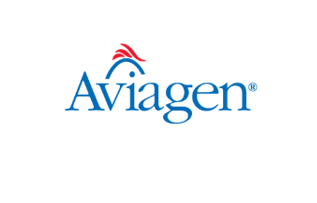



Breeding Sustainability – Aviagen illustrates CO2 reduction contribution to Global Poultry Industry
Feeding the world, preserving the planet – The FCR advantageHow can the food production chain meet the needs of the world’s ever-growing communities without overwhelming the planet? Aviagen® addresses this question through “Breeding Sustainability.” Sustainable poultry breeding contributes to a decrease in carbon emissions through a continuous improvement in biological efficiency, fitness and welfare traits. Feed Conversion Ratio (FCR) or the rate at which feed is converted to body weight is a key indicator of biological efficiency and has the greatest direct impact on the industry’s carbon footprint.
Due to an FCR improvement of 1.5-2.0 points per year, Aviagen contributes to a 1% year-on-year carbon footprint reduction. This video tells the story of the “FCR Advantage” through a balanced breeding approach, resulting in a yearly reduction in the poultry industry’s greenhouse gas (GHG) emissions.
Feeding the world, preserving the planet – The FCR advantage
The global population is growing. The United Nations (UN) estimates just over 8.5 billion people by 2030, and the world will face the challenge of providing food for everyone. The OECD-FAO Agricultural Outlook 2021-2030 predicts that meat production will need to rise by 44 million metric tonnes by 2030, with half of the increase supplied by poultry. The food industry currently contributes close to 25% of the world’s annual GHG emissions, and of this amount, poultry meat is responsible for about 6%.
As a result of FCR improvements, the modern broiler generates 50% less carbon footprint than the bird in 1970, and fast forwarding to 2030, the bird of the future will create a 15% lower carbon footprint than the bird of today.
In 2020, 133.3 million metric tonnes of poultry meat were produced globally, at a carbon cost of 6 kilograms CO2 for every kilogram of meat. That translates to 800 million tonnes of CO2.
“To illustrate the impact with a hypothetical example, based on our FCR gains, if every bird were an Aviagen bird, this amount would be reduced by 8 million metric tonnes per year. To put it in perspective, this is the carbon equivalent of flying around the world on a Boeing 747-400 5,906 times,” explained Aviagen’s Director of Global Genetics Dr. Santiago Avendaño. “As a poultry breeder, we are at the beginning of the food production chain, and we take our responsibility of contributing to the sustainability of the entire industry seriously. We have worked for years to breed efficiencies that make poultry production more sustainable, while at the same time advancing bird health, welfare and performance. Because we care about the planet, our customers and the communities they serve, we are committed to continually breeding for sustainability for decades to come.”
Breeding a greener future
Aviagen has made Balanced Breeding one of its top 5 corporate commitments. Balanced Breeding simultaneously promotes the Environmental, Economic and Social pillars of sustainability, helping farmers around the world feed their communities with a healthy, affordable and sustainable source of protein, while breeding efficiencies that help to preserve our planet for today and for generations to come.
Learn more here.
Join in the conversation at IPPE
This year at the International Production and Processing Expo (IPPE), which takes place Jan. 25-27 in Atlanta, Ga., US, Santiago will delve into this topic in his presentation entitled, “Poultry breeding’s contribution to the environmental sustainability of the meat sector.” You may join him in this discussion on Jan. 26 11:30 am in booth B3649. To talk “Breeding Sustainability” with the Aviagen team, IPPE visitors can stop by booth B4225.










